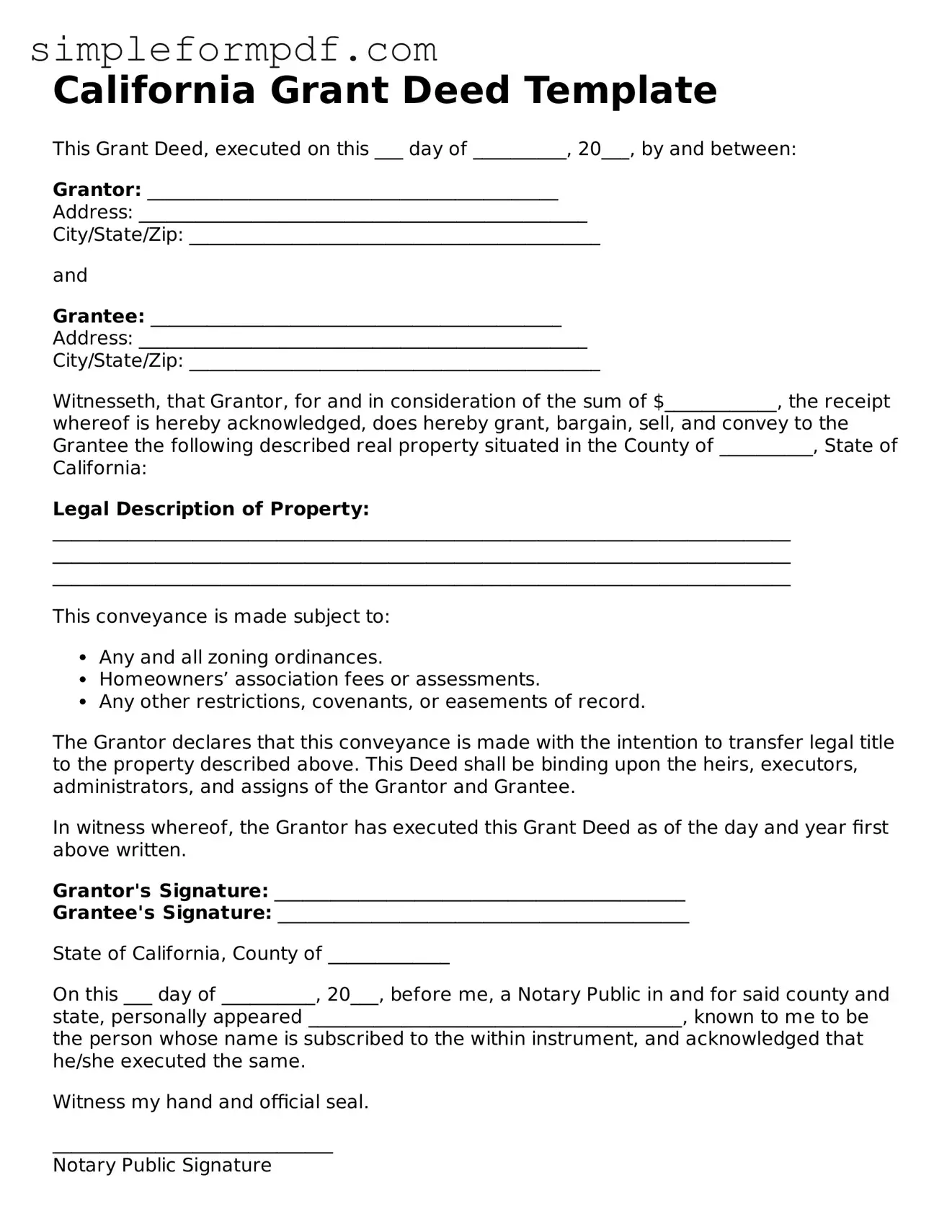California Grant Deed Template
This Grant Deed, executed on this ___ day of __________, 20___, by and between:
Grantor: ____________________________________________
Address: ________________________________________________
City/State/Zip: ____________________________________________
and
Grantee: ____________________________________________
Address: ________________________________________________
City/State/Zip: ____________________________________________
Witnesseth, that Grantor, for and in consideration of the sum of $____________, the receipt whereof is hereby acknowledged, does hereby grant, bargain, sell, and convey to the Grantee the following described real property situated in the County of __________, State of California:
Legal Description of Property:
_______________________________________________________________________________
_______________________________________________________________________________
_______________________________________________________________________________
This conveyance is made subject to:
- Any and all zoning ordinances.
- Homeowners’ association fees or assessments.
- Any other restrictions, covenants, or easements of record.
The Grantor declares that this conveyance is made with the intention to transfer legal title to the property described above. This Deed shall be binding upon the heirs, executors, administrators, and assigns of the Grantor and Grantee.
In witness whereof, the Grantor has executed this Grant Deed as of the day and year first above written.
Grantor's Signature: ____________________________________________
Grantee's Signature: ____________________________________________
State of California, County of _____________
On this ___ day of __________, 20___, before me, a Notary Public in and for said county and state, personally appeared ________________________________________, known to me to be the person whose name is subscribed to the within instrument, and acknowledged that he/she executed the same.
Witness my hand and official seal.
______________________________
Notary Public Signature
My Commission Expires: ______________
